Open access Genetic ancestry changes in Stone to Bronze Age transition in the East European plain, by Saag et al. bioRxiv (2020).
Interesting excerpts (emphasis mine):
Y-DNA chromosome haplogroup
(…) the Bronze Age Fatyanovo Culture individuals [] maternal (subclades of mtDNA hg U5, U4, U2e, H, T, W, J, K, I and N1a) and paternal (chrY hg R1a-M417) lineages were ones characteristic of CWC individuals elsewhere in Europe. Interestingly, in all individuals for which the chrY hg could be determined with more depth (n=6), it was R1a2-Z93, a lineage now spread in Central and South Asia, rather than the R1a1-Z283 lineage that is common in Europe.
I have updated the Ancient DNA Dataset and the ArcGIS Online WebApp with the newly published samples.
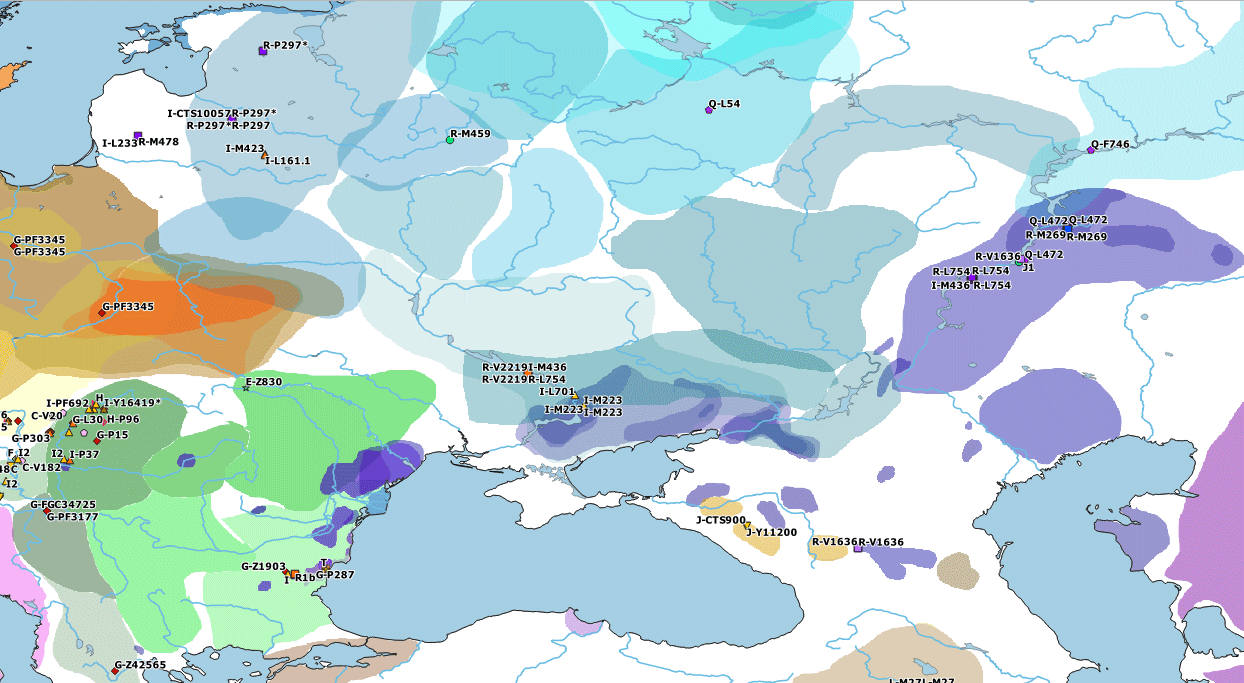
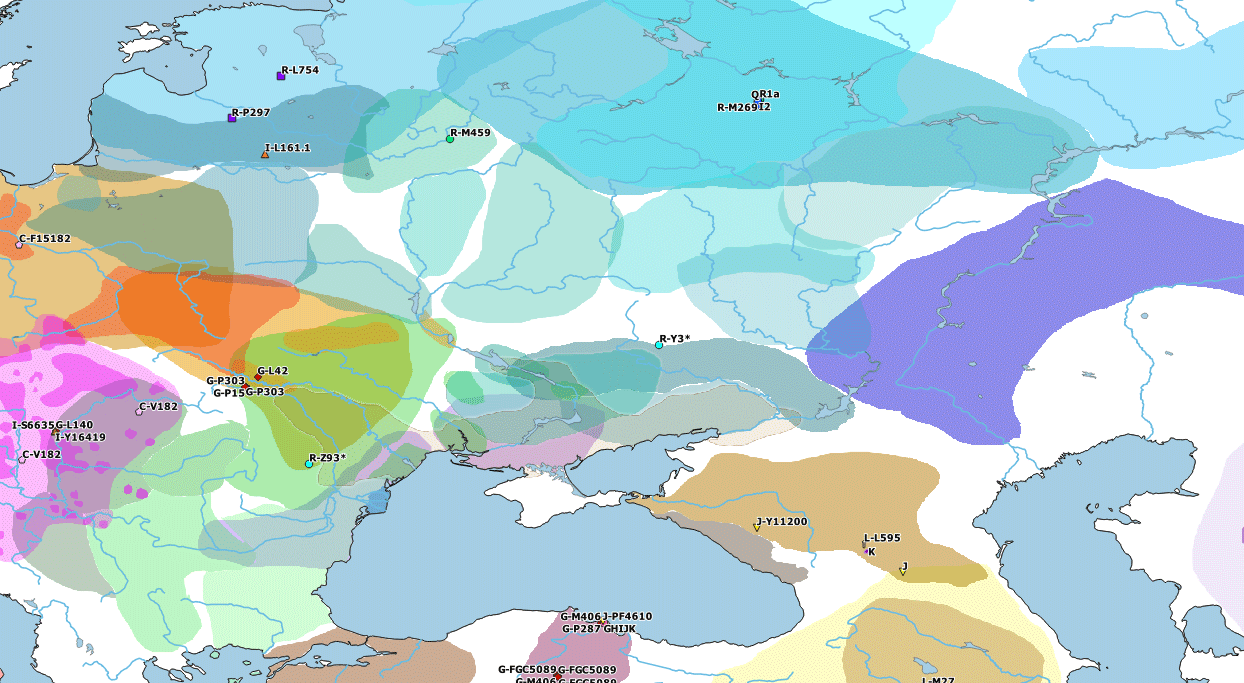


Ancestry
On the PCA, the Fatyanovo individuals (and the Estonian CWC individual) group together with many European Late Neolithic/Bronze Age (LNBA) and Steppe Middle/Late Bronze Age (MLBA) individuals on top of modern Northern and Eastern Europeans. This ancient cluster is shifted towards Anatolian and European EF compared to Steppe Early/Middle Bronze Age (EMBA) populations, including the Yamnaya.
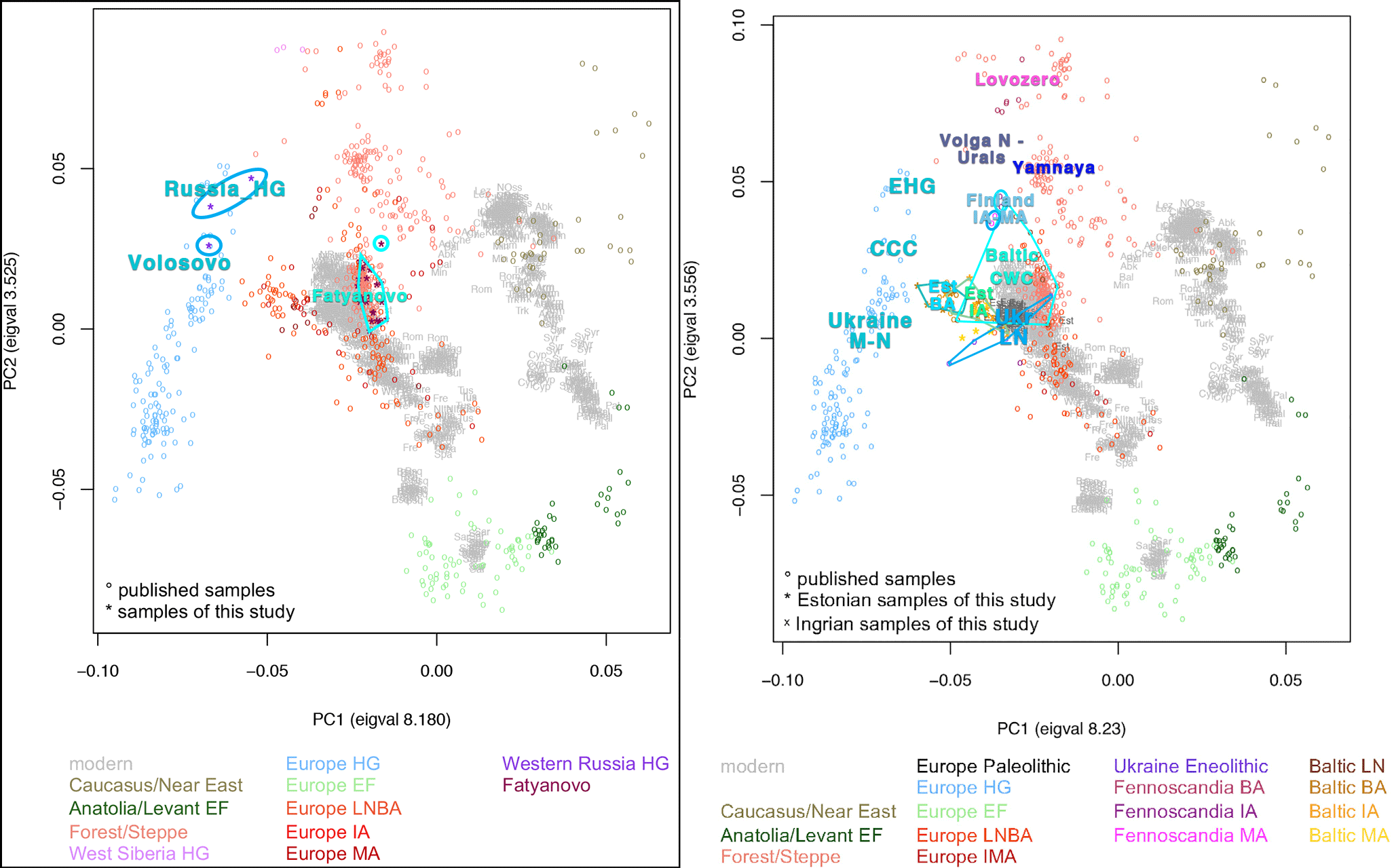
A priori the Fatyanovo cluster looks – as I expected – like all other Corded Ware groups, suggesting yet again that the R1a-rich Proto-Corded Ware population that gave rise to eastern and western groups was, indeed, different from the Yamnaya.
One interesting sample at first glance could be the potential outlier I marked in a cyan circle above, which might be related to an ancestry contribution closer to the Caucasus, although without Eneolithic samples from the North Pontic area it will be difficult to say even when this dataset becomes available.
NOTE. That interaction might potentially be linked to the known intense contacts in metallurgy, but also to the expected south-north slave trade between West/Central Uralic peoples and Indo-Iranians…and indeed to both, as the Pontic origin of new Niche-Grave incomers shows.
(…) we used two complementary methods (qpAdm and ChromoPainter/NNLS) to determine the most suitable proxies for the admixing populations and the mixing proportions. The model with the highest p-value and the lowest standard errors for qpAdm had Yamnaya and Levant Neolithic (N) as sources while the model with the smallest residuals for ChromoPainter/NNLS included also WHG, so we are presenting both models for both analyses. We ran the analyses for Fatyanovo, Central CWC and Baltic CWC and saw that in the results of the more complex model, some of the Yamnaya ancestry from the simpler model got reassigned as WHG but the proportions of Levant N ancestry remained similar (within 4%). We found that although the results from qpAdm and ChromoPainter/NNLS differed somewhat, both showed more Levant N ancestry in Fatyanovo (~22% and ~17%) than in Central/Baltic CWC (~11% and ~10%). What is more, this result is supported by models where Fatyanovo and Central/Baltic CWC are modeled as a mixture of Levant N and Baltic/Central CWC, respectively
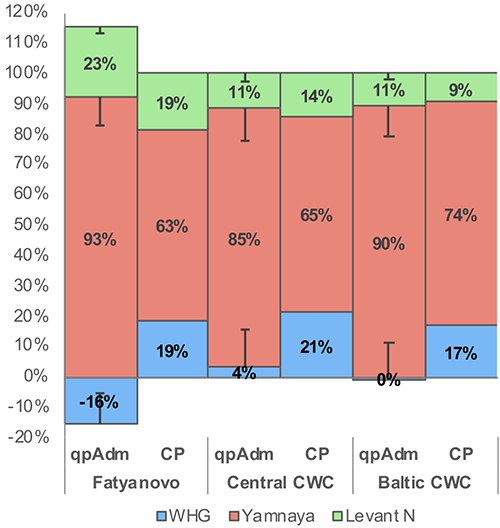
Comments
The simplistic ancestry analyses and p-value chasing notwithstanding, this paper shows there was a clear majority of Classical CWC-like ancestry and R1a-Z93 lineages among Fatyanovo peoples, hence most likely among Abashevo, too, which support the expectations (or solve the doubts of) my previous posts:
- On the routes of expansion of R1a-Z645 lineages (2018).
- On the Baltic and Forest CWC expansions (2019).
- On the chronological and geographical evolution of “Steppe ancestry” (2019).
Now, there is still the question about the origin of R1a-Z283-rich communities in Eastern Europe and beyond the Urals.
The (rare?) R1a-Z280(*?) subclades found in two Srubnaya samples, and other cases found later in West Siberia, among Finno-Ugric peoples on both sides of the Urals, and among Hungarian Conqueror elites, suggest that some R1a-Z280 lineages were already part of expanding Central Uralic- (Fatyanovo-Balanovo-derived) and Ugro-Samoyedic-speaking (Abashevo-derived) groups.
Two possibilities remain for the origin of R1a-Z283 lineages likely replacing R1a-Z93-rich communities in the North-Eastern European Forest Zone during the (Early to Middle) Bronze Age – barring unlikely huge local bottlenecks, given the northern location of the sampled Fatyanovo groups:
- From the west, with the unifying A-horizon, as suggested by the replacement of Central CWC R1a-M417(xZ645) by R1a-Z645 lineages, visible in some Eastern European EBA cultures; and/or
- From the north-west, with Battle Axe-related peoples in a not-so-peaceful interaction with Fatyanovo-derived groups.
Option 1 is possible, and it might prove very relevant to pinpoint the origin of the spread of Finno-Samic in Fennoscandia, given that the predominant BAC-related R1a-Y2395 lineages were partly replaced by R1a-Z282 subclades in the Eastern Baltic during the same period. However, Estonian LBA ancestry suggests large regional continuity, hence likely local bottlenecks from the Eastern Baltic coincident with the spread of textile ceramics. Option 2 seems especially likely, then, in light of the known archaeological Battle Axe-Fatyanovo interactions.
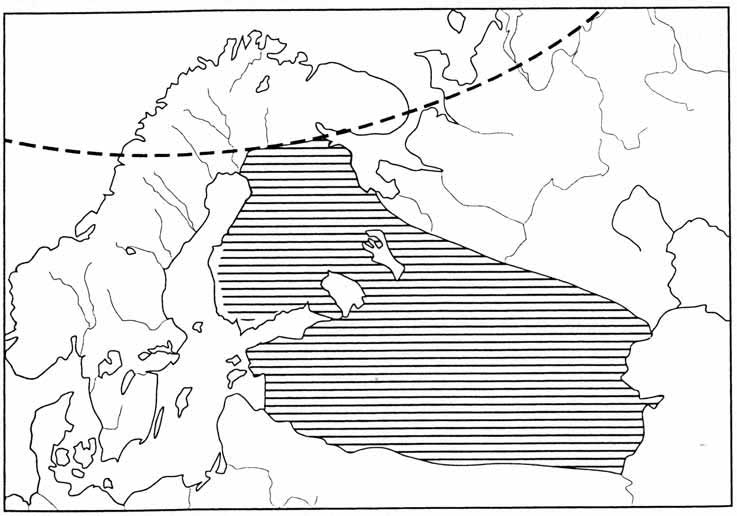
Both remaining options combined with the already available genomic data fully contradict a north(west)ward spread of a Fatyanovo-derived Netted Ware population, as proposed by Carpelan (2002). This model has been recently incorporated by some scholars into their Uralic homeland proposals, which generally include Fatyanovo- and/or Abashevo-related Bronze Age groups, supposedly partially derived from Volosovo hunter-gatherers (see e.g. Parpola 2017).
Therefore, I would say that an unexpected but very interesting consequence of the Y-DNA homogeneity in this early published data is that Mordvinic can now be tentatively attributed to a (south-)eastward expansion of R1a-Z283-rich West-Uralic-speaking peoples into areas previously dominated by R1a-Z93-rich Fatyanovo, hence probably represented by the expansion of textile ware, which is exactly what was needed to close the archaeological and genomic gap of the proposed early West Uralic expansion in North-Eastern Europe.
Related
- Fully Steppe-like Proto-Corded Ware Late Trypillians
- Earliest R1a-Z93…from Late Trypillia in the Podolian-Volhynian Upland!
- “Steppe ancestry” step by step (2019): Mesolithic to Early Bronze Age Eurasia
- On the Ukraine Eneolithic outlier I6561 from Alexandria
- Genetic continuity among Uralic-speaking cultures in north-eastern Europe
- Baltic Finns in the Bronze Age, of hg. R1a-Z283 and Corded Ware ancestry
- Early Uralic – Indo-European contacts within Europe
- Volosovo hunter-gatherers started to disappear earlier than previously believed
- European hydrotoponymy (IV): tug of war between Balto-Slavic and West Uralic
- Pre-Germanic and Pre-Balto-Finnic shared vocabulary from Pitted Ware seal hunters
- Corded Ware ancestry in North Eurasia and the Uralic expansion
- Uralic speakers formed clines of Corded Ware ancestry with WHG:ANE populations